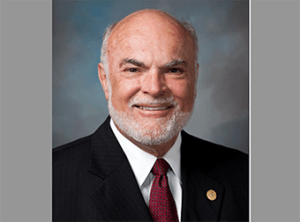PANEL CONSIDERS SCHOOL FINANCE
Published 8:45 am Wednesday, April 26, 2017
The Senate Education Committee on Tuesday heard bills related to school funding, considering sweeping changes to the formula that directs money to districts as well as a program supporters say could lead to steep cuts in funding for hundreds of school districts if it dies.
The first issue comes after a ruling in the state’s favor from the Supreme Court of Texas last May. A challenge to the equity of the program was dismissed, but not without a strong admonition from the court to lawmakers. The opinion, authored by Justice Don Willett, said while technically constitutional, the Texas school finance system was in need of an overhaul. “[Students] deserve transformational, top-to-bottom reforms that amount to more than Band-Aid on top of Band-Aid,” wrote Willett for the court.
For Senate Education Committee Chair and Friendswood Senator Larry Taylor, this gives the Legislature a chance to fix the problem. “We’ve been given an opportunity by the Supreme Court, with their decision that our system was constitutional but messed up,” he said at Tuesday’s hearing. He laid out a bill designed to simplify and increase equity in the way Texas pays for public education. SB 2145 would completely revamp the formulas that determine how much each district gets. It would wipe out 49 sections and subchapters of complicated and arcane calculations and years of ad hoc fixes, replacing them with a simple, one-line formula. It adds the regular program allotment, based on a fixed rate set at the state level representing the cost to educate an average student for a year, adds four separate allotments based on at-risk, disability, and bi-lingual student populations and career and tech needs, and multiplies that by the local school property tax rate. Add a transportation allowance to that total and it becomes the yearly funding budget for each district. “[SB] 2145 establishes a fresh start for school finance by removing inefficiencies and creating a funding system based on actual costs and that takes taxpayer effort into consideration,” said Taylor.
Trending
Unlike the current system, which depends heavily on local property values, which could go up or down in a given year, the new system will depend on a district’s tax effort. Each penny of local school property tax would represent one percent of total funding; a district with a $1.05 rate would get five percent more than one with a $1 rate. For districts that can operate effectively on less, this could mean tax cuts. Tax increases would come with a commensurate increase in money for schools.
Also Tuesday, the committee heard a bill that would extend a decade old hold-harmless provision from the last major attempt at overhauling school finance. Additional State Aid for Tax Reduction, or ASATR, is a program that was intended to offset revenue losses from the 2006 tax compression that reduced property taxes in the state by a third. In 2011, the Legislature decided to put a sunset date on the program of September 2017, hoping that growth in property values would be enough to cover the ten-year old tax cuts. “Many school districts were able to grow out of that, but there are some that still remain in,” said Brenham Senator Lois Kolkhorst. “The arbitrary number of 2017 as it sunsets…I’m not sure it was scientific, it just gave a cliff and said that most of the school districts should’ve grown out of this.” Her bill, SB 419, would continue the program until 2023.
For some districts, ASATR funds make up more than a third of their budget. Without that money, she said, many districts will face severe staff and program cuts. But with a price tag of $400 million for next biennium, money that isn’t set aside in the Senate’s version of the budget, the bill remains pending in committee as lawmakers consider the issue.
The Senate will reconvene Monday, April 24 at 2 p.m.






